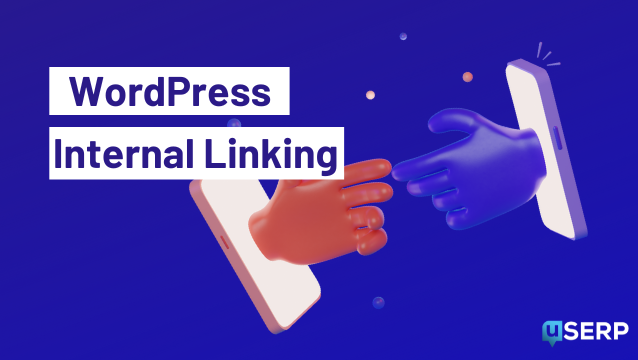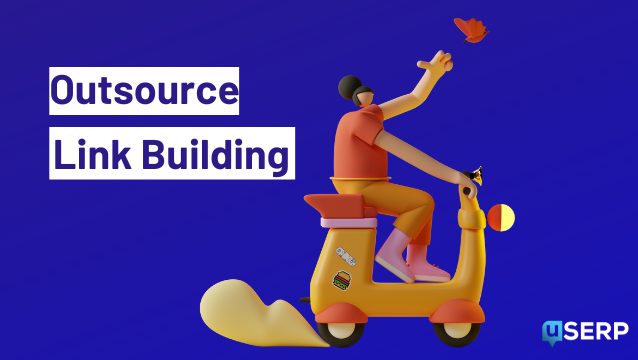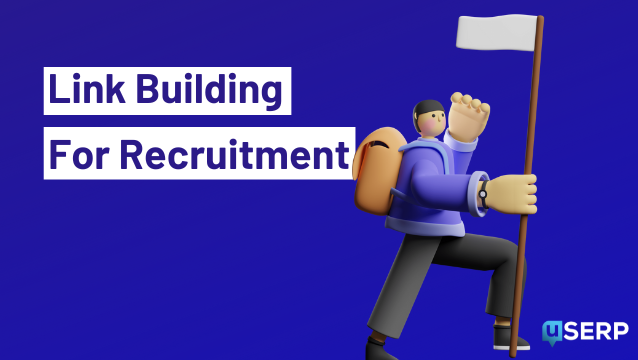Ever heard of HARO?
Yes?
Sure you have. And not only have you heard of them, but you know HARO is an awesome way to build up your brand through PR, score wonderful backlinks, and even build long lasting, fruitful relationships with those busy journalists.
All true, but only if you can use HARO the right way.
My guide on how to use HARO shows you exactly how, and here you will learn:
- How HARO benefits your brand;
- How to set up an account on HARO;
- How to pitch properly and get better results with less work;
- How to beat the cons that come attached to HARO pitching.
With a lot to cover, let’s get started immediately.
What is HARO and How Does it Work?
HARO (an acronym for “Help a Reporter Out”) is a site that connects journalists, reporters and bloggers with subject matter experts.
The platform serves as a middleman between journalists looking for quotes and experts who have relevant knowledge to contribute to their stories.
Journalistic sources are however not limited to experts alone. Amateurs with real life experience who have interesting stories to tell can also tap into the platform. This means both a business expert looking for exposure and some single mum struggling to send her kids to college have equal opportunities to get featured.
This expertise and experience that regular people bring to the table are very important to journalists.
It’s because they do not always want their analysis to be in the first person alone, and featuring quotes from other people makes their pieces more credible and valuable, and it lets them preserve a neutral tone to their writing.
HARO helps both parties find each other. Journalists get exclusive info delivered to them via email and on time, and sources build brands and links by getting quoted.
More on HARO benefits below, but here’s a simple breakdown of how the platform works.
Journalists first send in their queries, and HARO then emails them to sources who have expertise in the industry.
After you sign up for HARO, you’ll receive regular journo requests related to your pre-registered areas of interest or expertise.
HARO sends you this information as a list of links to queries, three times a day, on all workdays,(except during important holidays). From this list, you can then select the most important and relevant queries you want to respond to.
To make things simple, the request generally includes four key items:
- The query, i.e., the main topic of the story;
- Inclusion criteria for you to be considered as an expert on such topic;
- The deadline for submission;
- An anonymous email to which you can send your pitch.
Here’s an example HARO query from one of HARO queries.
What are the Benefits of HARO for Marketers?
HARO is a unique service that offers some exciting benefits for those who use it regularly.
#1- High-Quality Backlinks
Quality backlinks are the bread and butter of any successful SEO campaign. They’re treated as impartial votes from other sites that vouch for your site’s greatness and your content’s awesomeness;
and Google (and other search engines) use quality backlinks to help them decide where pages will rank in the SERPS.
Using HARO the right way gives you a chance to score dream links from the strongest sites in the world like New York Times, Forbes, Entrepreneur, and lots more.
These are the sites where most bloggers can only dream about landing placement, but with HARO it becomes possible for pretty much anyone.
It’s fantastic for multiple niches from SaaS link building to e-commerce link building.
If you were one, you could write about e.g. preventing ransomware attacks, and it’d be an excellent chance to appear in a NYT article with a link to your domain.
#2- Brand Building
Web users would rather do business with reputable brands than unknown sites, and having a solid brand gives you a clear edge over your competition. Therefore, you should leave no stone unturned in building up your brand.
Media mentions and press features need to be an integral part of your branding strategies and using HARO is an easy way to score brand mentions on some of the most popular sites in the world.
By targeting relevant industry queries, you can get your business name in front of more eyeballs and create a solid reputation for your brand, for free.
Responding to relevant local queries is also very beneficial as it might lead to people in your physical store’s vicinity searching for your business more often. This is good for business and also a positive ranking factor for Google.
Another way HARO helps you with brand building is that most links you score will come in the form of branded links.
Branded links are shorter versions of a URL built around your brand name and have been shown to drive brand recognition and awareness.
#3- Build Relationships with Journalists
Being featured in the press is good for your brand, but really, what are the odds of a random reporter coming through your (virtual) front door and asking for a quote?
Exactly!
Repeated emails and calls to media houses may also make you appear too desperate and this will not earn you a good reputation.
HARO helps you with the necessary connection without much hassle. You can easily get access to appropriate reporters and journalists whose interests match your business or industry.
Providing relevant and awesome responses gives you leverage. This in turn can help you build a working relationship with journalists, so they come to you directly for a quote.
Even if you do not get featured the first time, you can keep trying and over time you will get better and eventually land a feature.
And once you have your first, it gets easier to land the subsequent ones, especially if you work with the same reporters.
Remember, building a relationship with you makes their life easier as well.
#4- Connect with Webmasters in Your Niche
HARO is not a service that only journalists use. Bloggers, influencers, and non-profit companies looking for expert sources can also place queries on the platform (note: to place a query on HARO platform, the website has to rank among the top 1 million of all sites on the internet.
Some top brands are also there to curate content ideas and look for guest posts. This gives you a handful of websites to connect with and build mutually beneficial relationships.
Thus, aside from press features and media mentions, using HARO regularly can get you placement on regular blogs in your niche (e.g., small business IT). It can also help you connect with other webmasters in the industry and open your brand to lots of other opportunities.
A final caveat here is that not all your pitches will be accepted. However, you can reuse the unused response for future queries as they tend to repeat quite often.
How To Sign Up for HARO (Tutorial)
One of the beautiful things about HARO is that you can enjoy all the benefits the platform has to offer for free. All you have to do is sign up, set up your profile and you are good to go.
Although HARO has 3 different paid plans that give you premium access and support, the free, basic plan is enough for most marketers and small business brands to make the most of the platform.
With the basic plan, you’ll get three emails every Monday-Friday. You’ll also get a contact mail for support in case you have questions.
The paid plans are Standard for $19 per month, Advanced for $49 per month, and Premium for $149 per month. The main difference between these plans is in the number of keywords-tailored profiles you can set up and how quick you can see queries before other users. SMS alerts are also available.
Now let’s get to the part where you actually sign up and set up your personalized profile.
Signing up to HARI is as straightforward as following the 3 steps below:
First, go to the HARO homepage and click the signup icon at the top right-hand side.
.
Second, fill in your details: enter your first name, last name, email, country, password, phone number, company name and annual revenue.
For the revenue section, a prompt gives you various revenue ranges you can easily select from.
Third, HARO will send a confirmation link to your mailbox and all you have to do at this point is click the link to start editing your account and setting up your profile.
Setting up a HARO Profile
Setting up your profile is the next thing after creating a personal account on HARO. Select the appropriate account type and make sure your basic details are correct.
Here, it’s essential to choose the right industry and areas of expertise. This is to ensure that you’re sent relevant queries where you can easily respond and demonstrate your expertise.
Otherwise, you can also subscribe to Master HARO email to review all the queries for that day directly in your inbox.
Save the changes and you’re done and part of the HAO system.
Congratulations! Now you can start responding to queries, and submitting pitches to reporters, for free.
How to Respond to HARO Queries so You Get Picked More Often
Your success in securing press mentions and building relationships with reporters all comes down to the quality, relevance, and timeliness of your pitch.
To achieve the best results with your pitch, here are guidelines of what to do and what to avoid when writing your next HARO pitch.
#1- Be Timely:
Journalists are busy, work on tight deadlines, and a piece of news material won’t be on the table forever. Your response has to arrive within the deadline, preferably much sooner.
Most journalists sourcing quotes from HARO will work with the first set of timely and appropriate responses they can find. Therefore, sending in a timely pitch significantly increases your success rate.
The competition is rife and being on time can make all the difference. As soon as you receive query emails, find relevant ones, and start preparing your response immediately.
Pro tip: being timely is important but only if you have a dedicated VA doing HARO for you. Then it pays to be as fast as possible because you can teach your VA to respond immediately to relevant queries.
However, if you’re responding to HARO queries all by yourself then make sure you don’t respond immediately as you get those emails, but instead set a dedicated time of the day when you’ll do it.
(For me it was first thing in the morning).
The reason for this change in strategy is because doing HARO is great, but it can’t and shouldn’t interfere with other areas of growing your business. For example, it is a huge productivity killer to be in the middle of writing a blog post, and then having to stop writing just so you can respond to a HARO query.
That would annihilate your productivity and long term would make you an unsuccessful online entrepreneur.
Prioritization is key in business and HARO will never be the one thing to turn your business around. Instead, think of it as a nice bonus to have.
#2- Be Direct:
Your pitch should be direct and straight to the point. Try not to exceed 150 words of content and follow the length guidelines if there are any.
Also, always stay on-topic and avoid using the opportunity to pitch products and services. This is a recipe for getting your emails deleted and your profile blacklisted.
Journalists are busy and they love nothing more than to quote your words directly. So, make their job easier by writing in soundbites. Provide what the journalist is looking for in quotable phrases and your chances of being noticed will skyrocket.
#3- Be Relevant:
Every query comes with a pre-set topic and a list of requirements you need to fulfill in order to have a shot at getting featured.
You must resist the urge to respond to queries where you can’t really contribute and where you’re just guessing.
At best it’ll be a waste of time for you; at worst you’ll get yourself blacklisted.
As a bonus tip, below your answer you can write a short bio where you can mention your experience with the topic at hand.
Although you can have a template for writing your pitches, you should really avoid generic responses that do not offer much value.
Always try to approach each query with a unique pitch. With a little bit of creativity you can find an interesting way of sharing your experience without being too wordy.
For example, here’s how I answered the particular HARO query put forth by Qhubekani Nyathi, a fellow blogger and marketer. I wrote a detailed, but not overly long response, I talked about my unique experience with the topic, and I even added a relevant image.
This effort and 20m of work got me a nice link to my Grammarly discount money page.
#4- Be Thorough:
Trying to send in a great pitch as fast as possible should not make you overlook tiny details that can hamper your chances.
Obvious typos will have the reporter question your expertise and professionalism and will often get your pitch in the trash bin when it could’ve been selected for inclusion.
Pro tip- I advise you run your HARO pitches through Quillbot before you send it. That’s because Quillbot has an excellent free grammar checker inbuilt into it.
#5- Be Result Oriented:
The reporter might not inform you when a news item you’re featured in goes live. You have to monitor your pitches and track results, just as you do with other marketing efforts.
Tracking results as well as tracking the time you spend on writing will help you know what works and what does not. This will help you write more successful pitches in the future.
To monitor mentions earned via HARO you can simply set up a Google alert for your brand name, or subscribe to the reporter’s news feed to find out when your name is mentioned.
You can also monitor Ahrefs’s new links report to catch those links.
3 Things to Avoid Doing With HARO Responses
#1- Promotional or sales pitch
You are on HARO to leverage your expertise, get a media mention, and promote your brand. The platform is not meant to make sales or tout your credentials.
This is usually a turn-off for most reporters. Overtly promotional pitches make your responses more likely to be headed for the bin.
#2- Attachments
According to HARO rules and guidelines, any attachment in your response will be stripped off and not be seen by the reporter.
If there is a need to share more information or if explicitly requested, you can do that with an appropriate link. (For example, Google Drive folder where they can find the appropriate images).
#3- Vague Response
To increase your chances of being noticed, hit the point from the onset. Avoid providing poorly researched, irrelevant, or non-specific responses.
In like terms, do not stray off-topic or just provide “contact me” info. Journalists may notice this pattern and stop attaching any value to your response.
HARO cons-
The platform is really a great one, not only for connecting with reporters and getting press mentions but also for story creation and keeping up with industry conversations.
However, some concerns you should be aware of include:
- Lack of feedback from journalists
- Vague queries and illegitimate or anonymous requests
- Flooded mailbox
These are all reasonable concerns. Nevertheless, with some time and experience, you can overcome these roadblocks and make the most of the platform.
You can set up a Google alert to monitor mentions and also create a special label in your mailbox for HARO queries. The former may serve as a source of feedback while the latter will help you prevent a flooded mailbox.
The final HARO con you need to consider is connected to link building with this platform. Namely, 99% of all links you get with HARO will go to your site’s homepage.
That’s simply the nature of HARO where journalists quoting you want to link to your site in general, and not one of your landing pages or blog posts.
Though there are some exceptions to the rule. Occasionally, a journalist will tell you to give them an example of X from your blog. It’s rare but when you see that make sure you use your most valuable page as an example.
A while back one HARO query was looking for examples of affiliate listicle posts. I gave them this free Minecraft server hosting listicle, it got accepted and I landed a DR73 link.
But it’s rare and has never happened again.
How to Use HARO in 2022 FAQ- Crucial Questions Answered!
People interested in HARO have plenty of questions about this service. And they bombard Quora with them.
Lucky, you, no need to waste your time plowing through Quora and its messy threads.
I curated (and answered) the best ones below.
#1- Is HARO Really a Free Service?
HARO is a freemium service. There’s a free option but also 2 premium tiers. However, the free HARO account is enough for scoring plenty of free backlinks for your site.
No need to waste money because it’s the quality of your pitch that counts the most.
#2- Do I Need to Have a Custom Designed Website to Stand Out?
You don’t need to have a custom website design to be picked as a HARO source. You also don’t need to have a dedicated landing page to which you’ll direct HARO journalists.
However, you do need to have a legit looking property.
Some trust signals journal look for before quoting a source in their article are:
- having a logo; with a distinguished logo design
- having a premium theme;
- having an about page;
- having obligatory pages (privacy policy, affiliate disclaimer, contact us page cookie policy…
- having a real author photo;
- having a decent amount of content on the blog;
- Being on a self hosted WordPress instead of free website builders (Wix, Tumblr, Blogger, Weebly).
The more of these trust signals you have the higher the chance you’ll get picked a source, and conversely, if you have none, you can give the best response to a HARO query in the world and you still won’t get chosen.
#3- Is HARO Worth it? Or is it Too Crowded?
HARO is worth it because of several reasons.
First, no matter how many people participate, journalists are always looking for the best answer. If your answer is the best, well written, grammatically correct (get a Grammarly free trial here to help you) and reeking of ample experience on the topic, you will get picked over others, even if there are thousands of competitors.
Second, HARO backlinks can be extremely valuable. For example, get one link from the New York Times and it’ll be worth it spending 10 hours responding to HARO queries.
Third, overtime as you pitch and pitch and pitch you will become more effective at scoring HARO links, and many journalists who often use HARO will remember you so you’ll have a chance to build a relationship with them. This will yield even more links and value for your business down the line.
#4- What Else Can I Do to Increase My Chances of Getting Accepted?
Here’s how to up your HARO chances even further.
First, follow the journalist’s instructions to the tee. That is a major mistake most people make; they think they’ll dazzle the reporter with their clever hijinx whereas in reality the reporter just wants to hear from you while respecting their HARO response guidelines.
So when they say to keep it shorter than 100 words, do it. What they say not to respond if you’re not an expert, save theirs and your time and don’t respond.
When they say they need a doctor to talk about X don’t try your luck even if you have personal experience with a particular illness, etc.
Second, have a short bio (<50 words) at the end of each of your response. The bio should tell what makes you qualified to answer a particular query. This is something most people miss, probably because they’re lazy to always be writing a 50-word bio. The secret is to write it once and then store it for repeated use.
Third, have a fast website. The last thing you want is to have a reporter click through to your site, and then back down because your slow site timed out and showed an error instead of the website proper.
If this happens, they’re bound to remember you and your site, and next time they’ll just immediately skip over your response.
The solution is hosting your site with an excellent host. My site is on Cloudways Vultr plan and it’s insanely fast. I recommend it wholeheartedly, but Cloudways is a premium host and most bloggers can’t afford them, especially early on in their blogging careers.
Don’t despair if that’s the case with you too.
Just get WP Rocket, the best caching plugin in the world. It’ll speed up your site enough so that your HARO acceptance rate doesn’t plummet.
#5- The Particular HARO Outlet is Only Giving Nofollow Links to Sources. Worth it?
Yes, nofollow links you get from HARO have SEO value, and that’s because Google treats nofollow as a hint and because those links truly are earned, organic and exactly the kind Google links best. So they will honor and pass value through them regardless of the nofollow tag.
And as a bonus occasionally you can get referral traffic flowing through that link
How to Use HARO (Conclusion)
That’s it.
My guide to using HARO is over.
Follow these tips and you’ll get far, especially if you stick with it as it takes a few months of pitching to see good initial results.
And good initial results turn into great results with time as you get more experience and you build relationships with bloggers and journalists who regularly use HARO.
Cheers!
- Learn How to use HARO Like a Boss in 2022 - April 25, 2022








